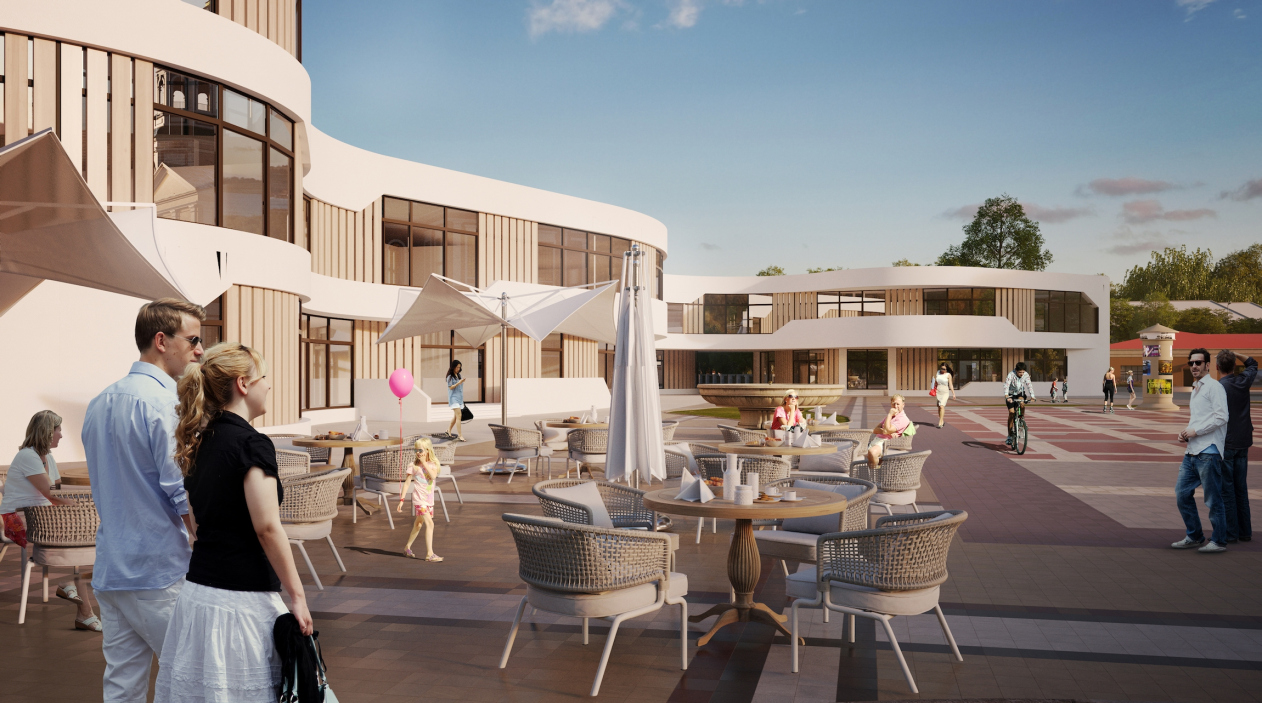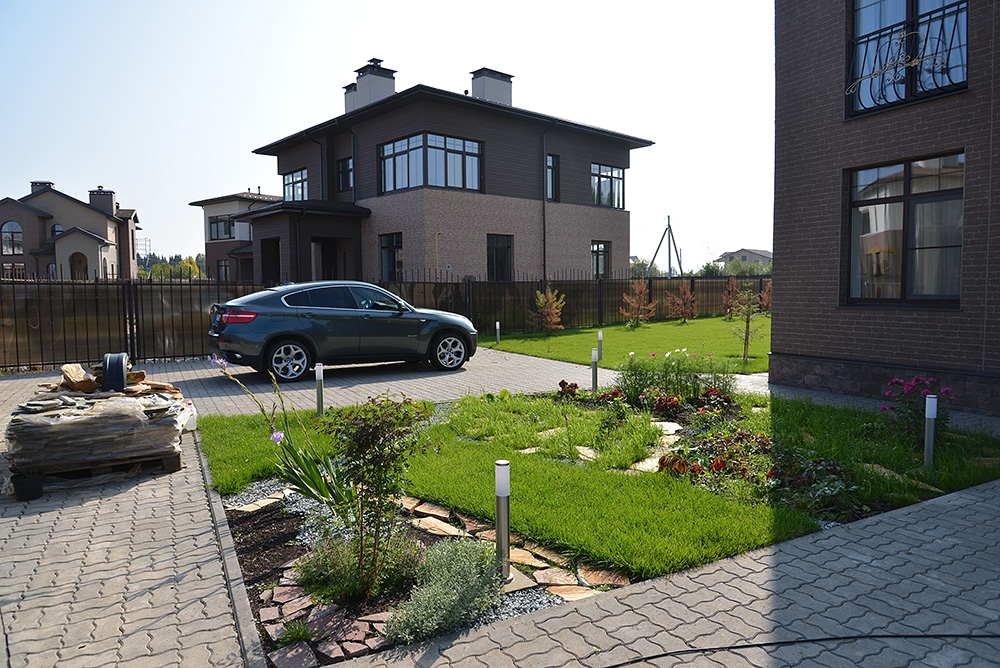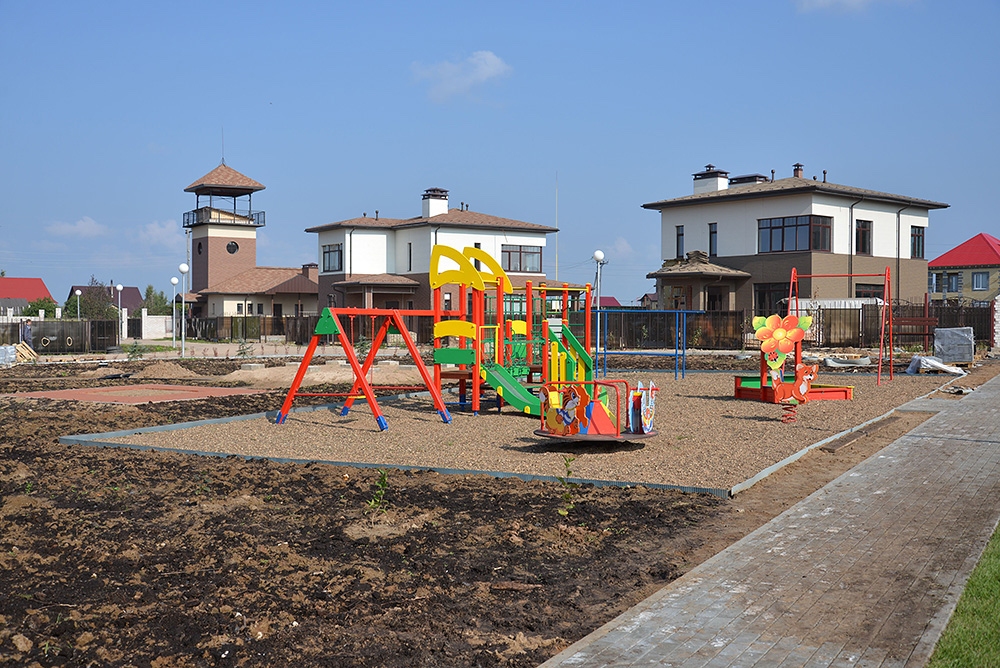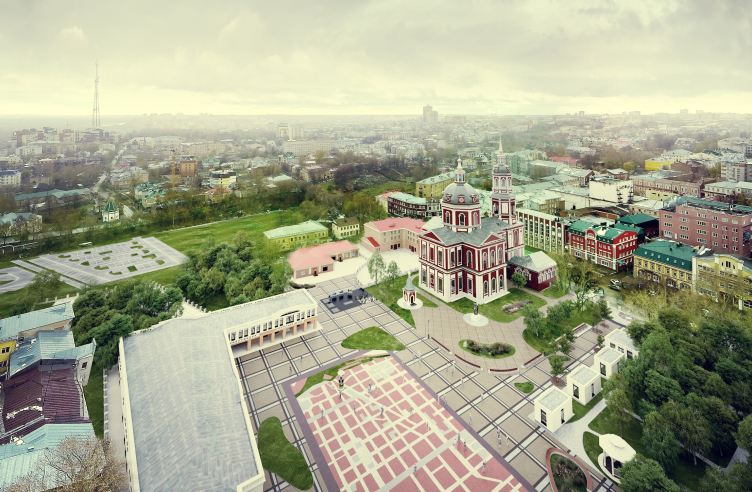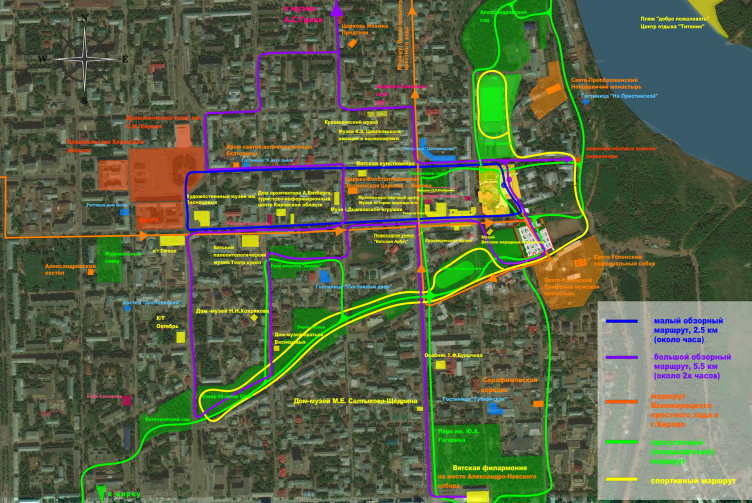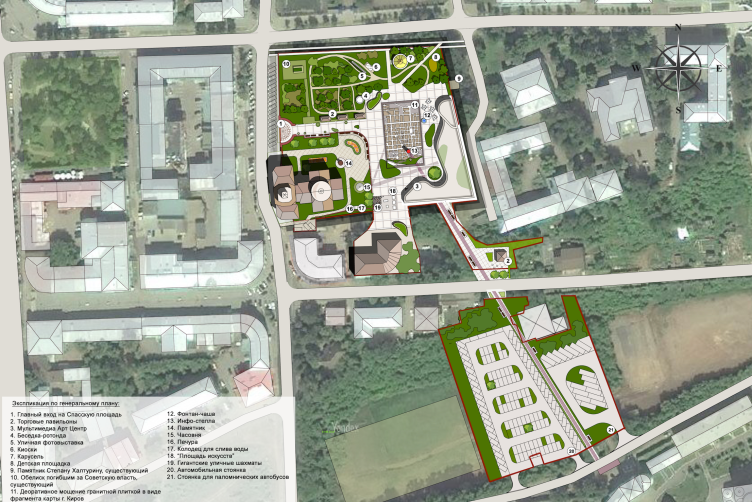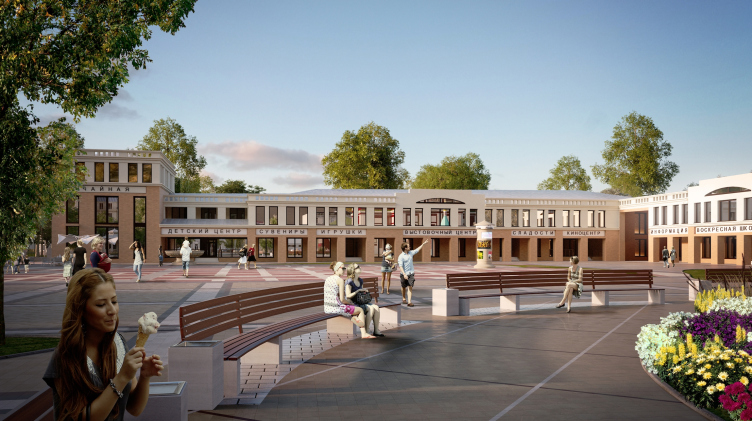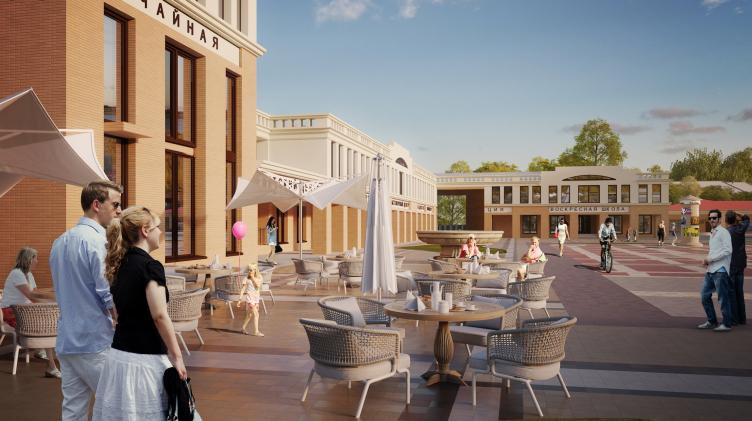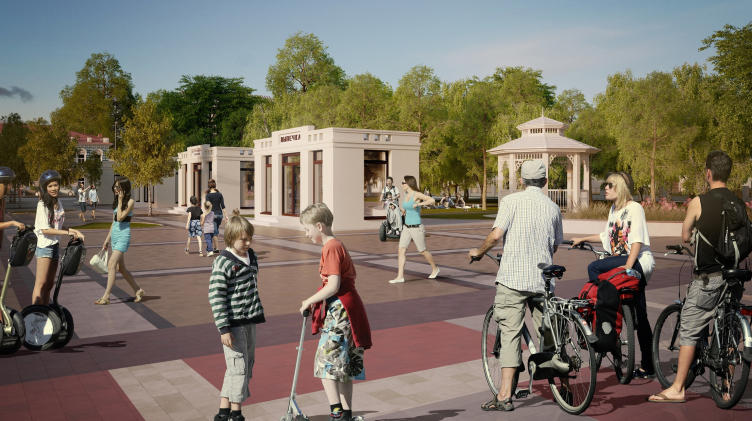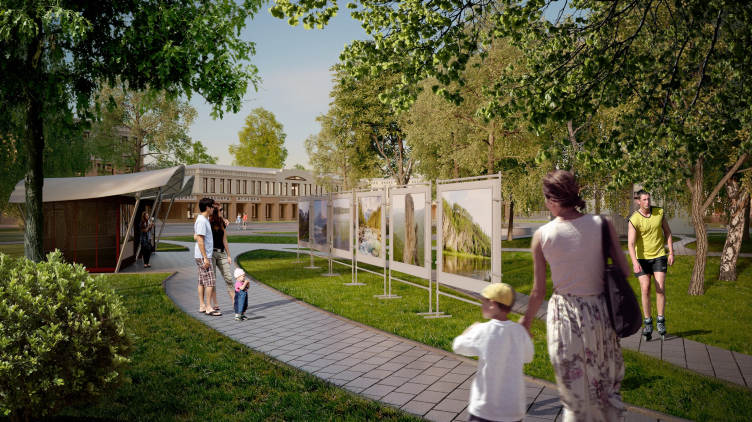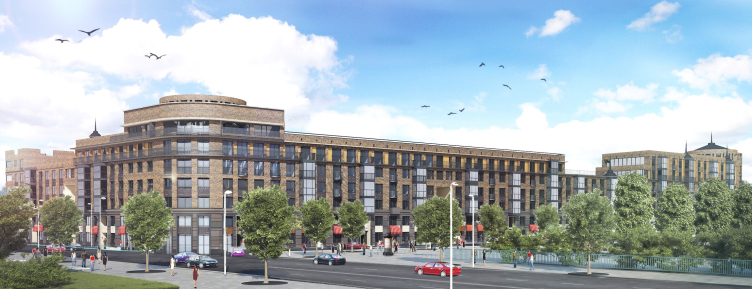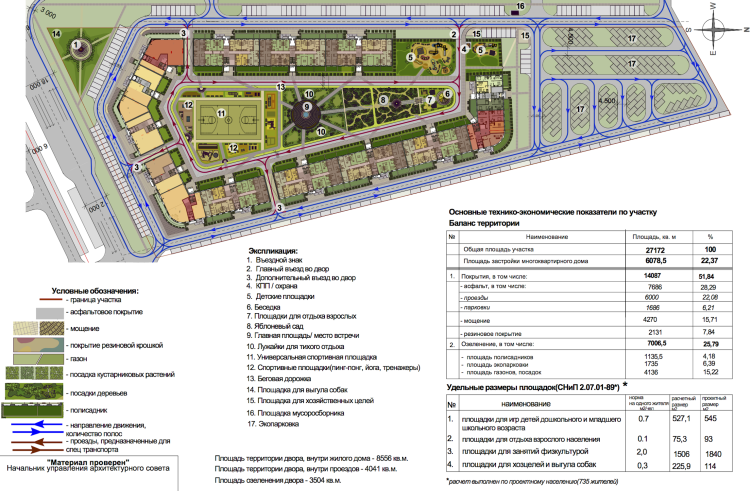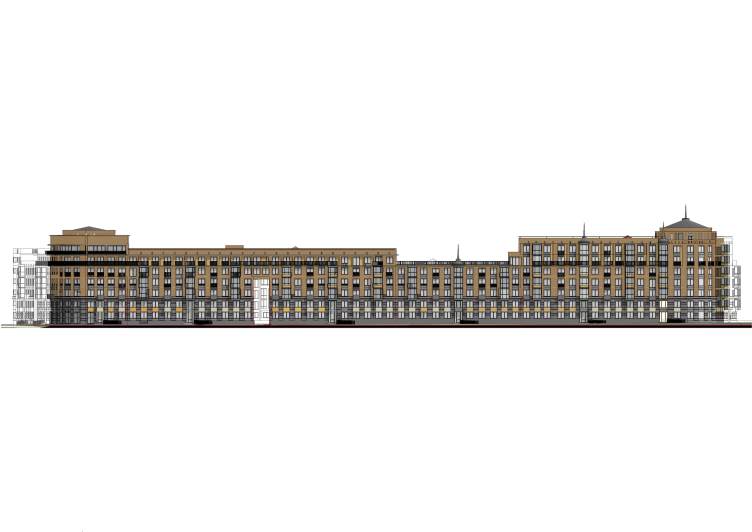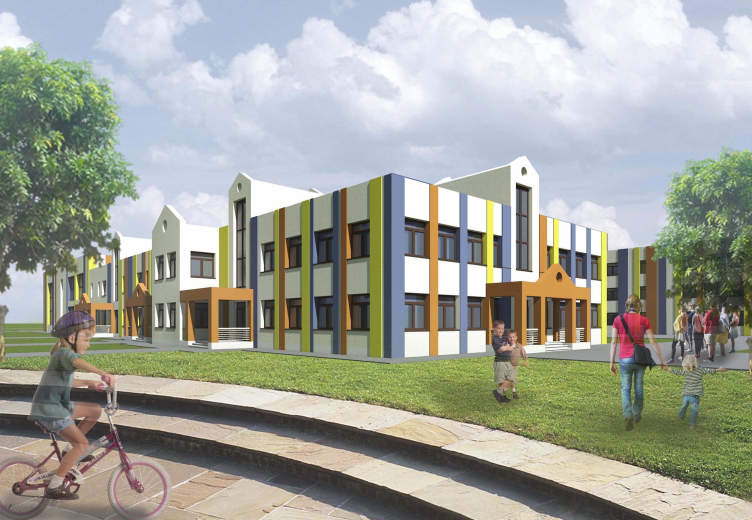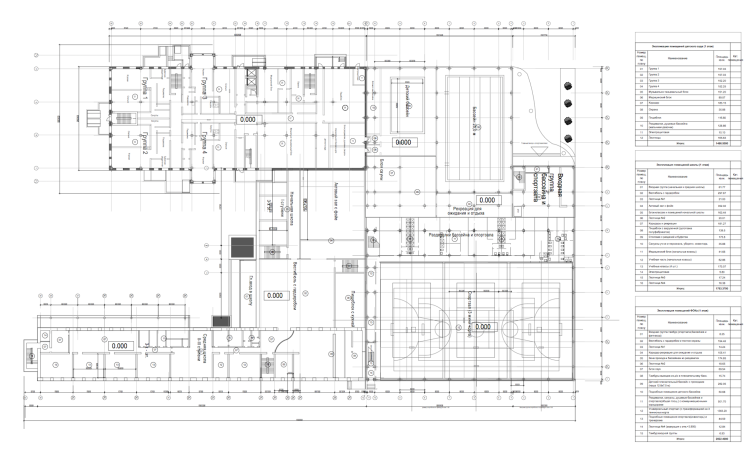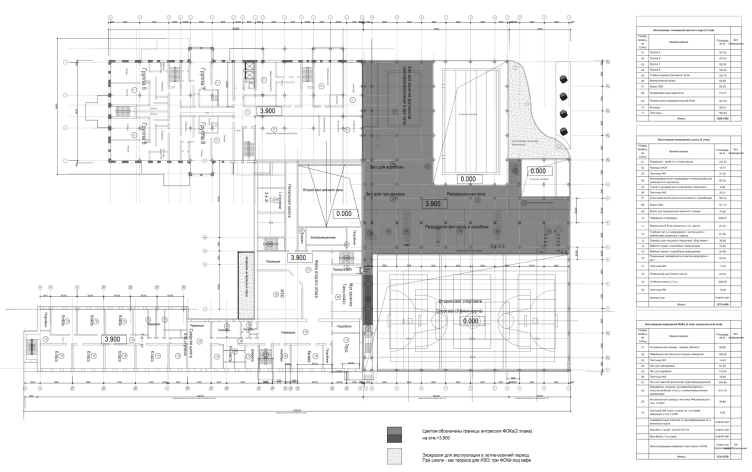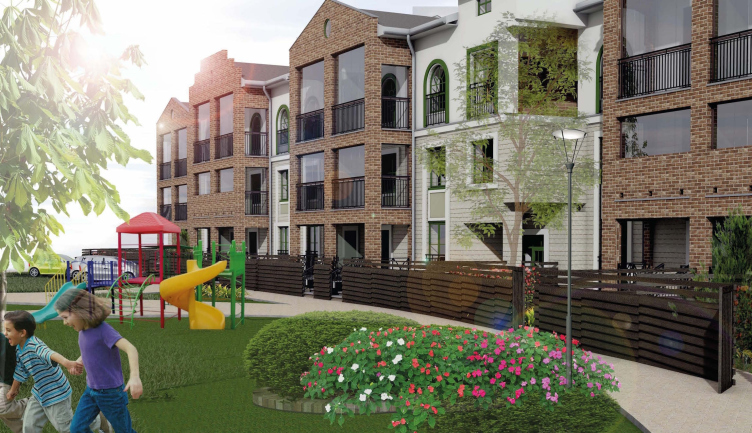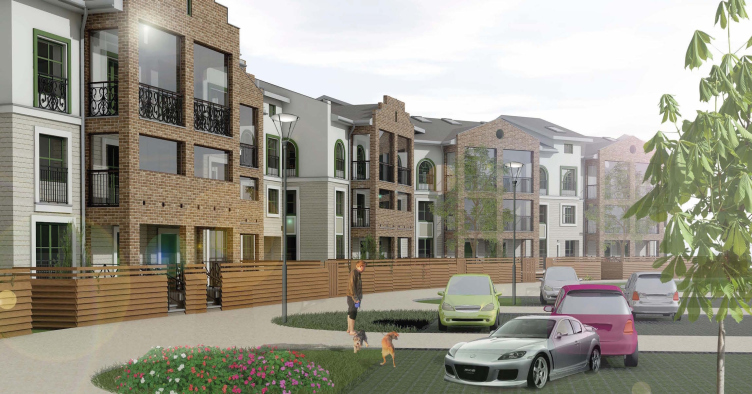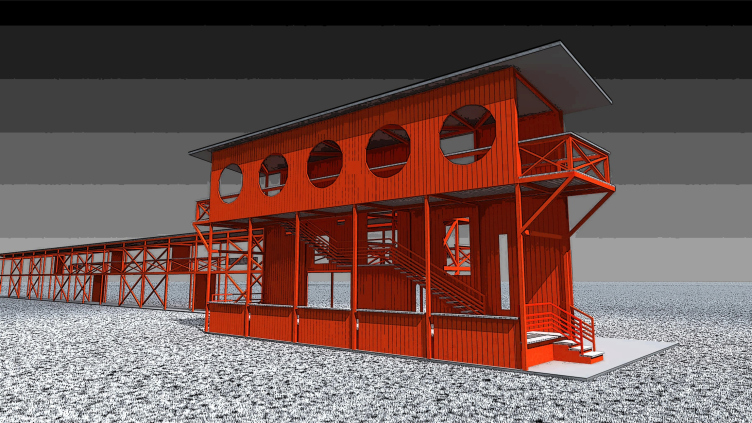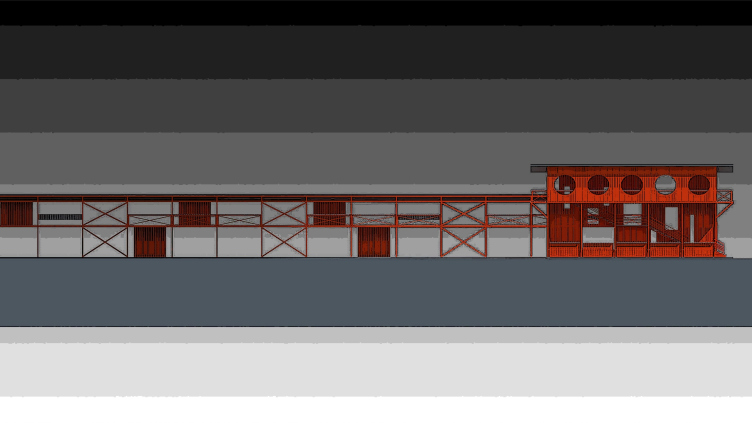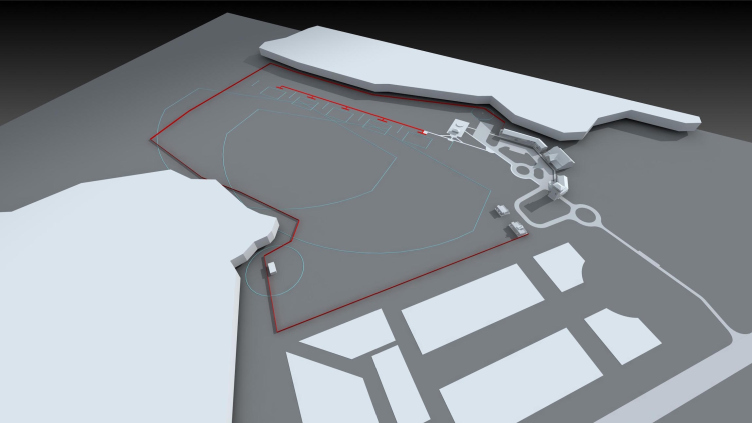"ILand" villa community © Arkhstroidesign
"ILand" villa community © Arkhstroidesign
The town and its surrounding areas
The city of Kirov that seems to be long about recovering its historical name of "Vyatka" ("Kirov" being the name of one of the legendary Russian revolutionaries) is getting several projects at once from "Arkhstroidesign" Company. It all began from the residential area of "ILand" that got "Best Business Class Residential Area" award in 2014. After that, the client invited the architectural company to take part in the competition for building one of the suburbs of the city. Aleksey Ivanov won the contest; this brought about a detailed architectural and engineering proposal under a poetic name of "Amphitheater".
The master plan of the city of Kirov, "Amphitheater" © Arkhstroidesign
Square and Park
Before the October Revolution, there were more than sixty churches and monasteries in Vyatka. Currently, on the donated money, the Spassky Temple is being restored - the building survived but it first served as a community center, and later on as a dormitory. The architects and their client took the square in front of the temple as the starting point for developing the city center. "Restoring the historical shopping arcades is no longer realistic - the architect shares - but turning what is now a wasteland into a nice public territory is quite possible.
Reconstruction of Kirov's Spasskaya Square. Birds-eye view © Arkhstroidesign
The Velikoretsky Cross Procession that has been carried out here for more than three hundred years prompted the idea of creating here a religion and information center with a weekend school, a center of fine arts for the little ones, a media center, and lecture halls. The authors came up with two versions of the project: in the style of historicism and in the "quasi-landscape" tradition with inclusion of the greenery and the terrain elements into the interior design. The new building of this Art Center will hold the corner of the square, there will be a fountain in front of it; the architects are planning to pave the whole square with granite paving stones, the pattern of which will represent a fragment of the city map. In the warm time of the year, vacant spaces by the walls of the Center will be occupied by the tables of the summer cafes. The landscaped territory of the temple and the chapel will be partially marked by a semicircle of benches. The authors propose to preserve as many as possible of the existing trees. Also they propose to keep intact the Stalin monument, the Stephan Khalturin (Russian revolutionary of the XIX century) monument, and the obelisk to those who died for the Soviet Power. A little bit further down the line, there will be a spacious parking lot stretching along the Spasskaya Street - among other things, the parking lot will also serve the pilgrimage busses.
Reconstruction of Kirov's Spasskaya Square. Traffic diagram with the adjacent projects © Arkhstroidesign
Reconstruction of Kirov's Spasskaya Square. Masterplan. Eco-project © Arkhstroidesign
The concept of organizing the Revolution Fighters Square (that is meant to be renamed into the Spasskaya Square) was considered by the architects together with the other public territories of the city center that they proposed to unite with one pedestrian and tourist route. Each square is meant to get a highlight and a centerpiece of its own. The future Spasskaya Square will be the square of fine arts, while others will turn into theater, shopping, and information-for-kids squares, as well as into tourist or recreation city parks.
Reconstruction of Kirov's Spasskaya Square. The square and the Mutimedia Art Center if viewed from the temple © Arkhstroidesign
Reconstruction of Kirov's Spasskaya Square. The square and the Mutimedia Art Center if viewed from the temple. Eco project © Arkhstroidesign
Reconstruction of Kirov's Spasskaya Square. The square and the Mutimedia Art Center if viewed from the square © Arkhstroidesign
Reconstruction of Kirov's Spasskaya Square. The square and the Mutimedia Art Center if viewed from the temple. Eco project © Arkhstroidesign
Reconstruction of Kirov's Spasskaya Square. The shopping arcades and the park if viewed from the square © Arkhstroidesign
Reconstruction of Kirov's Spasskaya Square. The square if viewed from the park © Arkhstroidesign
Housing Project
This is in fact a 30000 square meter single house flanked by driveways along its entire perimeter. The longest façade - more than 200 meters long - is only broken by an arch at its center. The symmetric composition with a decrease in the number of floors at its central part and massive towers at the corners of the building is meant to suggest a likeness to the Kremlin. The outlines of the street façades are rather neutral - in the tradition of Moscow "environmental" construction: brickwork, large window apertures, and latticed railings of the balconies. The yard façades have more color to them; they surround green lawns with apple trees, playgrounds, sport facilities, and a bicycle trail.
"Bastion" residential project in Kirov © Arkhstroidesign
"Bastion" residential project in Kirov © Arkhstroidesign
"Bastion" residential project in Kirov © Arkhstroidesign
"Bastion" residential project in Kirov. Masterplan © Arkhstroidesign
"Bastion" residential project in Kirov. Facade © Arkhstroidesign
School, Kindergarten, Sports and Recreation Center
Concurrently, the architects developed the project of a school, a kindergarten, and a sports and recreation center for the under-construction residential complex of "Metrograd". What is interesting is the fact that the architects are planning to place all the three functions into one volume with individual entrances, different height and number of floors, and a different design pitch.
Sports training complex in Kirov © Arkhstroidesign
Sports training complex in Kirov. Plan of the 1st floor © Arkhstroidesign
Sports training complex in Kirov. Plan of the 2nd floor © Arkhstroidesign
Villa Community
"Arkhstroidesign" is also doing a residential project named "Elki-Park" in Kirov's Novovyatsky District. The land site borders on botanical gardens on the one side, and on the Vyatka River on the other. The villas, townhouses, and the low-rise multi-apartment buildings are all positioned to command the river views. According to Aleksey Ivanov, this housing project is an experimental one because it is designed for the young and active generation. What makes this project special is the architects' attempt to create the type of an apartment building where the first-floor apartments have private little yards of their own and an individual entrance (these apartments have in fact two levels), while the apartments on the third floor have less square footage but they have an extra loft to compensate.
Low-rise high-comfort residential project in "Elki-Park" area. Project, 2015 © Arkhstroidesign
Low-rise high-comfort residential project in "Elki-Park" area. Project, 2015 © Arkhstroidesign
Low-rise high-comfort residential project in "Elki-Park" area. Plan of the 1st floor © Arkhstroidesign
Shooting Club
In the project of a private shooting club, located near the village of Doronichi 10 kilometers away from Kirov, near a protected conservation zone, the architects let their fantasy cut loose. The constructivist motifs, images in the vein of El Lisitsky, and compositional techniques in the spirit of Malevich are readable in a small but dramatic wooden volume painted red, with long overpasses and "bull's eye" windows.
Architectural and engineering proposal of a shooting club in Kirov © Arkhstroidesign
Architectural and engineering proposal of a shooting club in Kirov. Development drawing © Arkhstroidesign
Architectural and engineering proposal of a shooting club in Kirov. Birds-eye view © Arkhstroidesign
Thus, ultimately, Aleksey Ivanov's company had to take into consideration the entire city with its suburbs, residential areas, and its historical part - the architects piece the city's image together like a jigsaw puzzle, connecting the dots, filling the voids, and finding new gravity centers.

